Verdict
Combining a powerful induction hob and extractor fan into a wider-than-normal design, the Samsung Infinite Range CombiHob NZ84T9747VK/UR can give your kitchen the clean lines it deserves with the power you need. I found this model fast to heat water, and its automatic programmes are genuinely useful. Some of the controls could be a bit easier to use, though.
Pros
- Powerful extraction
- Fast heat-up times
- Useful automatic programmes
Cons
- Controls not always that intuitive
- Expensive
Introduction
Cooker hoods might be useful, but they’re often ugly and can ruin the look of a kitchen. The Infinite Range CombiHob NZ84T9747VK/UR solves that problem by integrating the extraction fan into the middle of the hob.
This makes for a larger-than-average hob, and you’ll need space below for the ducting, but if you hit the requirements, this is a powerful and flexible induction hob.
Design and features
- Integrated extractor fan
- Not always the most intuitive controls
- Automatic cooking programmes
At 830mm, the Samsung NZ84T9747VK/UR is wider than your average hob because there’s an extractor fan in the middle. That can save on having an overhead extraction fan, but it also means that despite the width, you don’t get any more physical cooking space. The AEG IAE84851FB, for example, has a bit more room for pans.
You also need to allow room for the extraction goods underneath, so you’ll lose some cupboard space. Extraction and recirculation options are available, so you don’t necessarily have to duct to the outside.
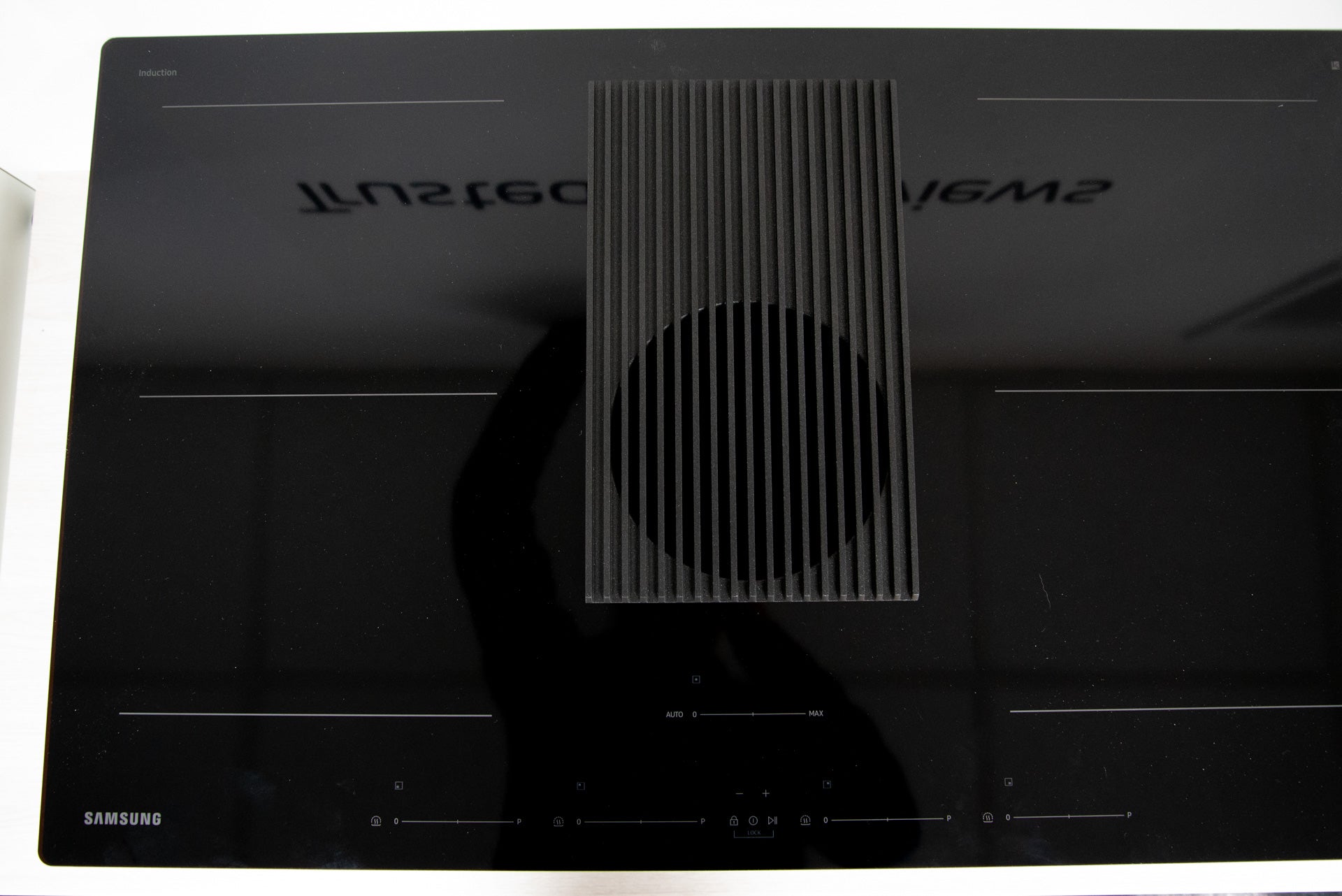
As with the burners, there are nine main power settings plus a boost for the extractor, although I found using it on the automatic mode was the best.
On top, there’s an aluminium grease filter, which is raised from the hob’s surface. That’s alright in terms of style, but if you want to move pans from one side of the hob to the other, they will have to be lifted. Without a completely flat surface, it also makes it harder to place larger items on the hob, such as big baking trays.
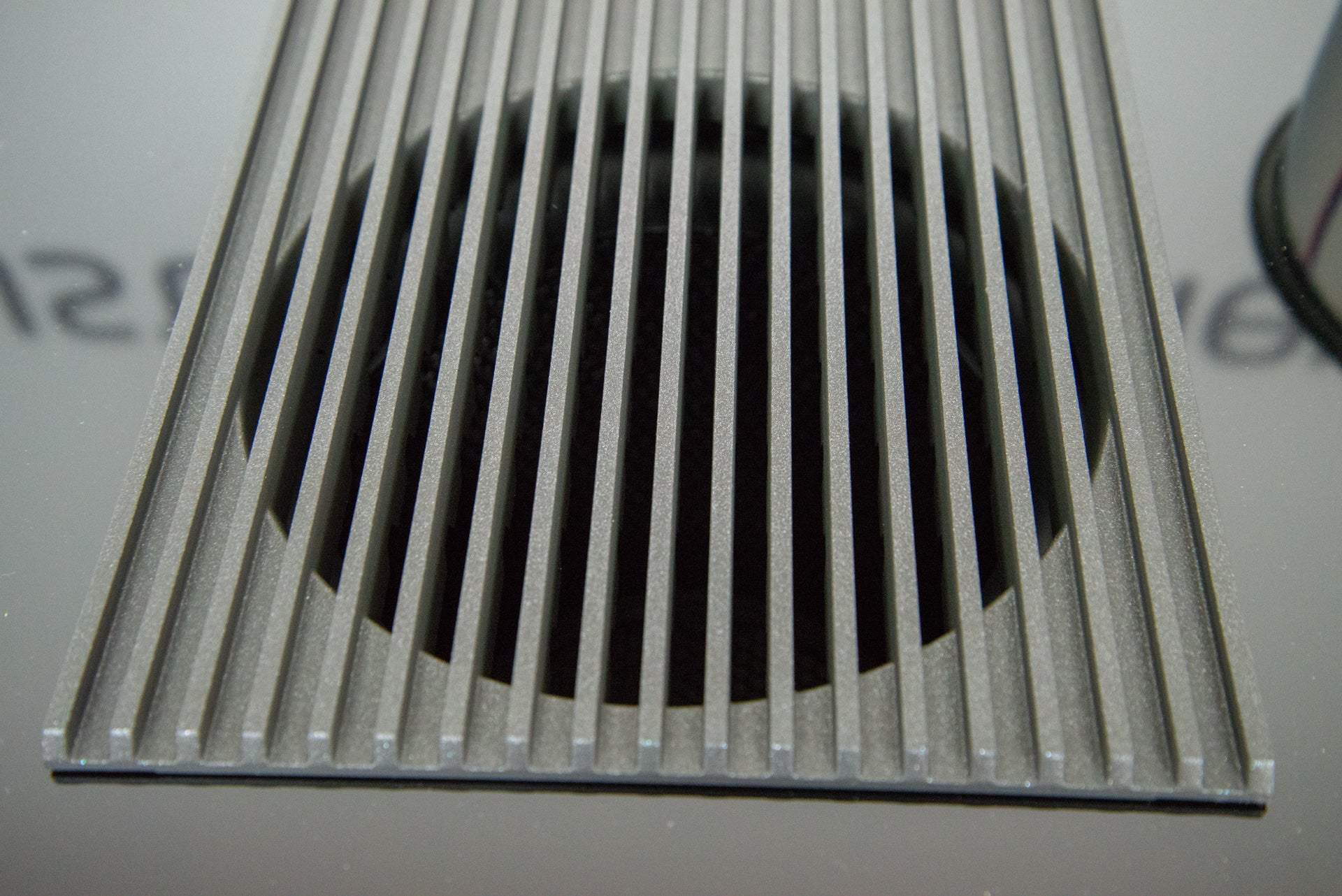
Inside, there’s a ceramic odour filter that removes smells as you cook (great when frying, I found) and a tray that collects any liquid spills.
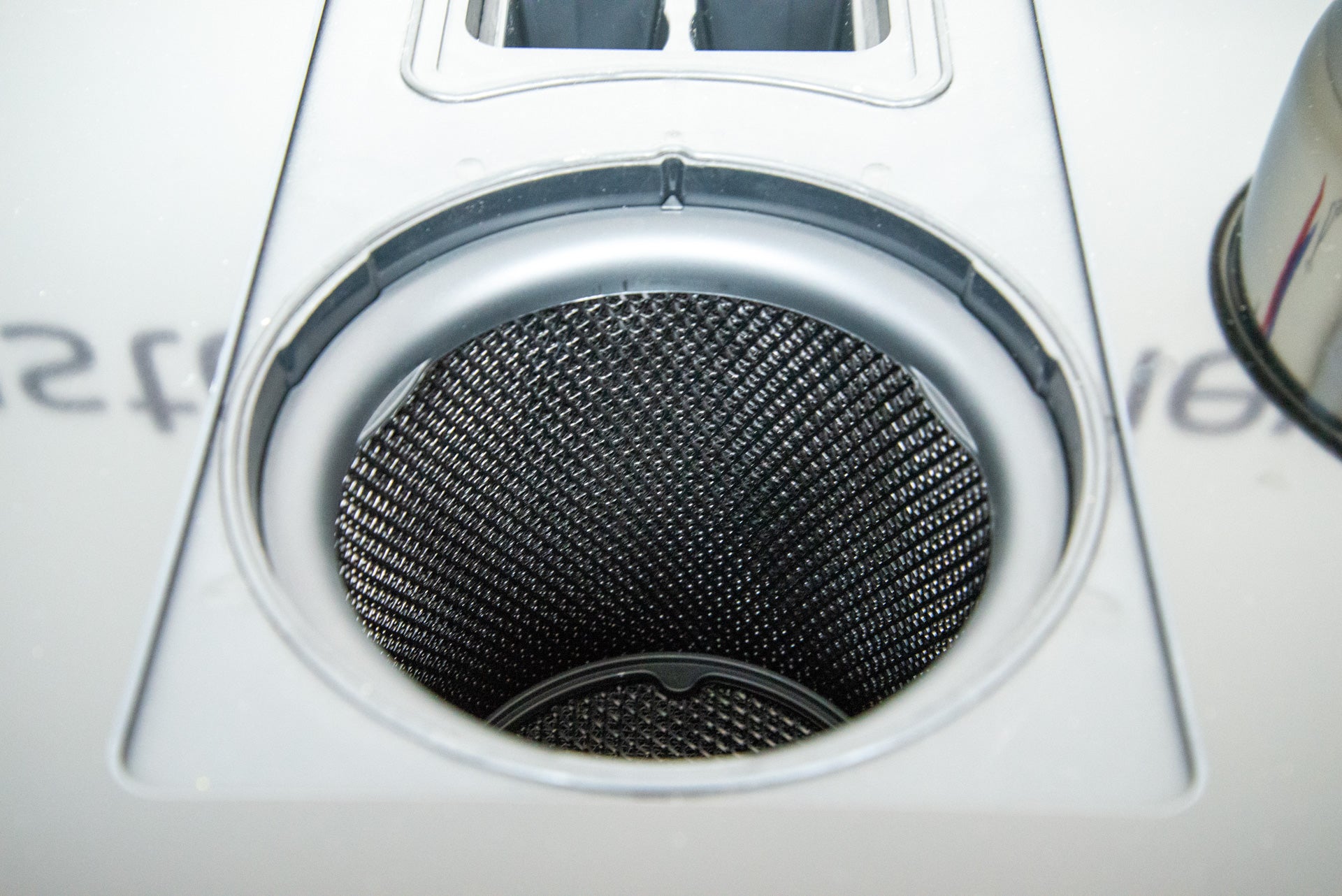
The Samsung NZ84T9747VK/UR has four identical burners, each of which has a power slider, ranging from zero to nine and delivering up to 2.1kW per burner. There’s also a power boost mode that increases power to 3.7kW.
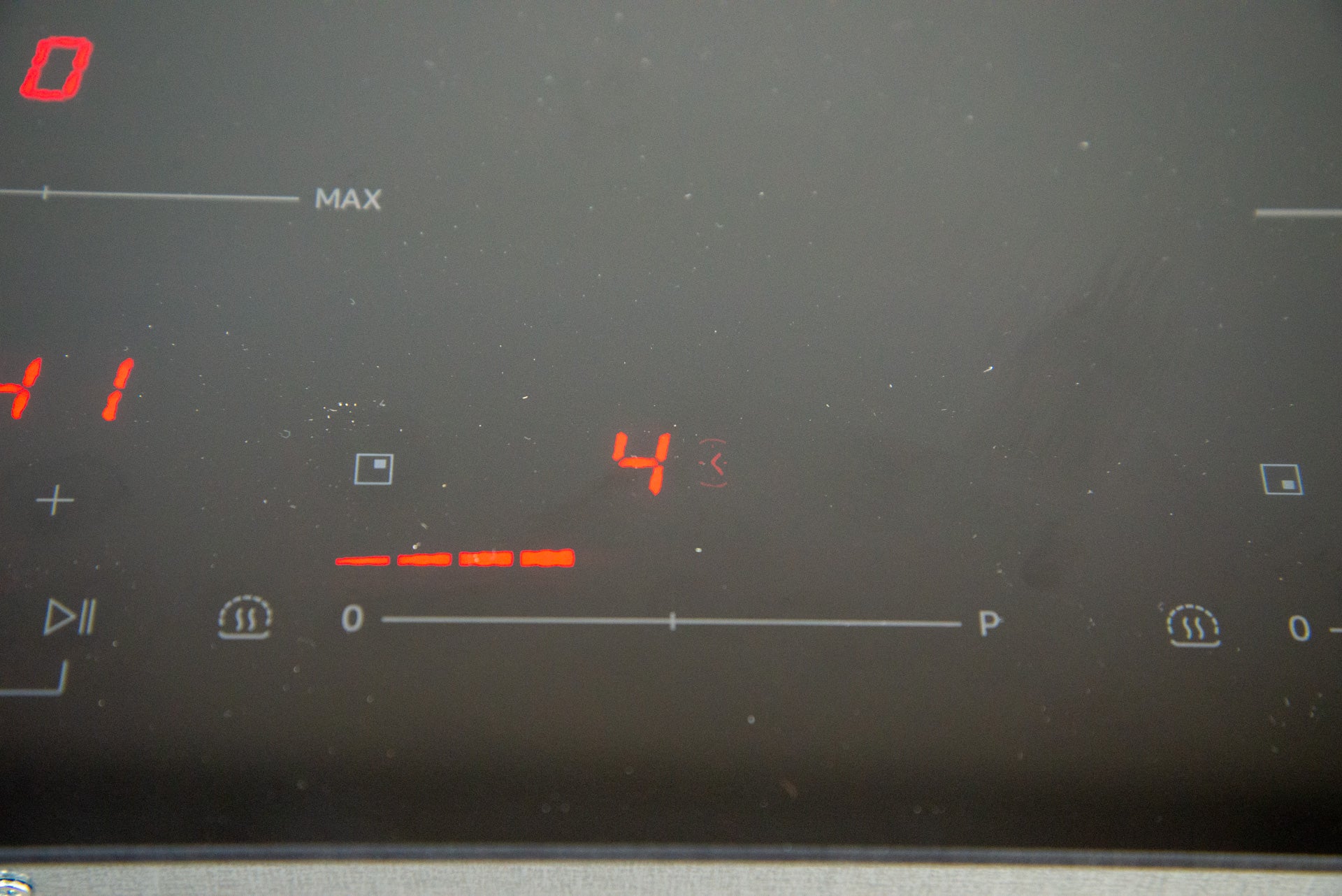
All four burners can be run at setting nine at the same time, but there’s a restriction on the power boost: one burner on the right and one on the left can be used in power boost mode at the same time, with the remaining two burners limited to setting five.
Nevertheless, that’s pretty flexible, as it means you can rapidly boil water on two burners, and still have enough power to keep other pans simmering away. Power boost is limited to 10mins, with burners dropping back to setting nine at the end of this period.
As well as running burners individually, you can combine the two on the left or two on the right into one larger zone, which is good for big pans or griddles. Doing this requires the two controls to be tapped at the same time. A dedicated linking button would have made life easier, but once I’d read the Samsung NZ84T9747VK/UR’s manual, I didn’t have to refer to it again.
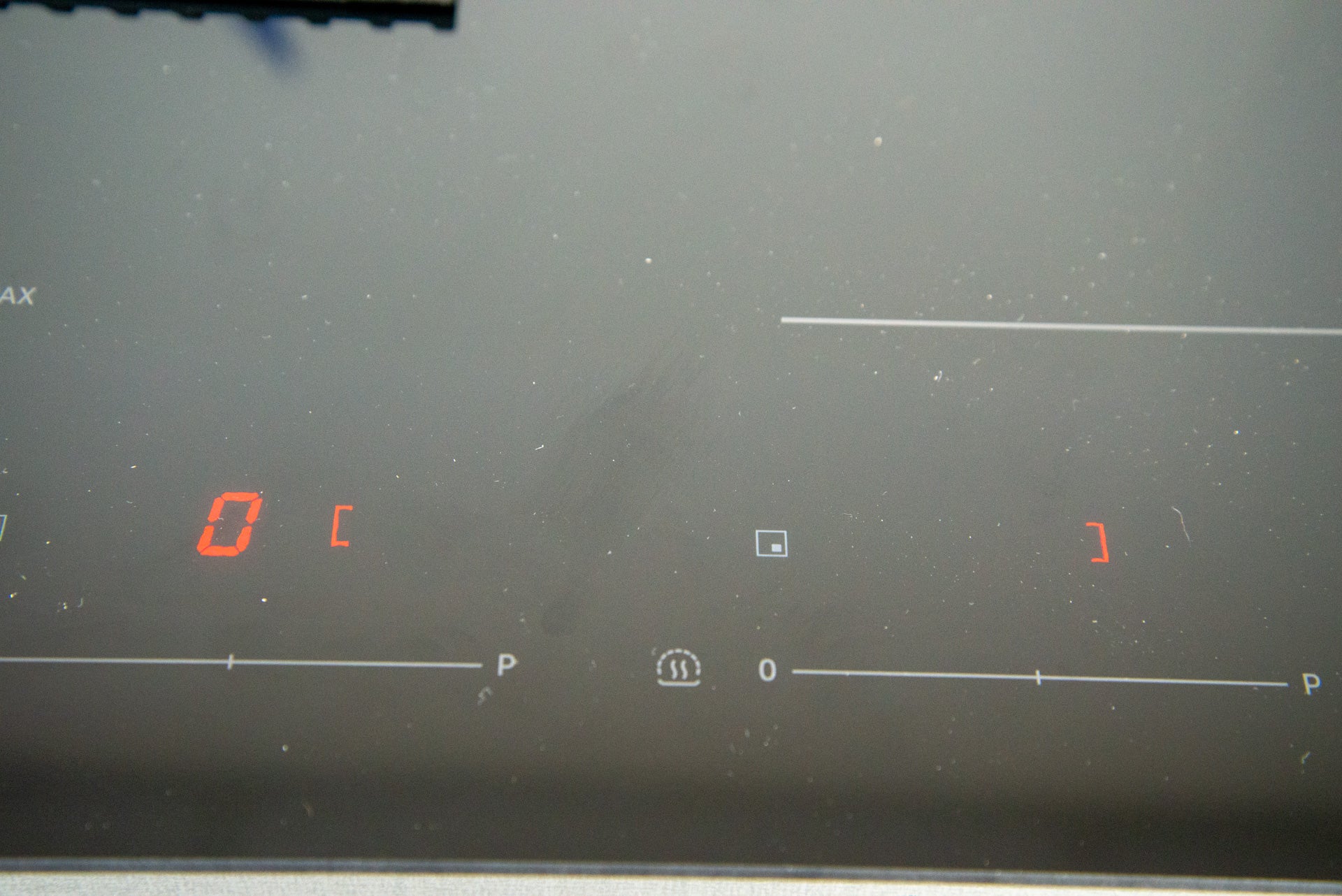
Each burner has a timer, with the power automatically cut after the set period. Additionally, there’s a standalone timer not linked to any zone.
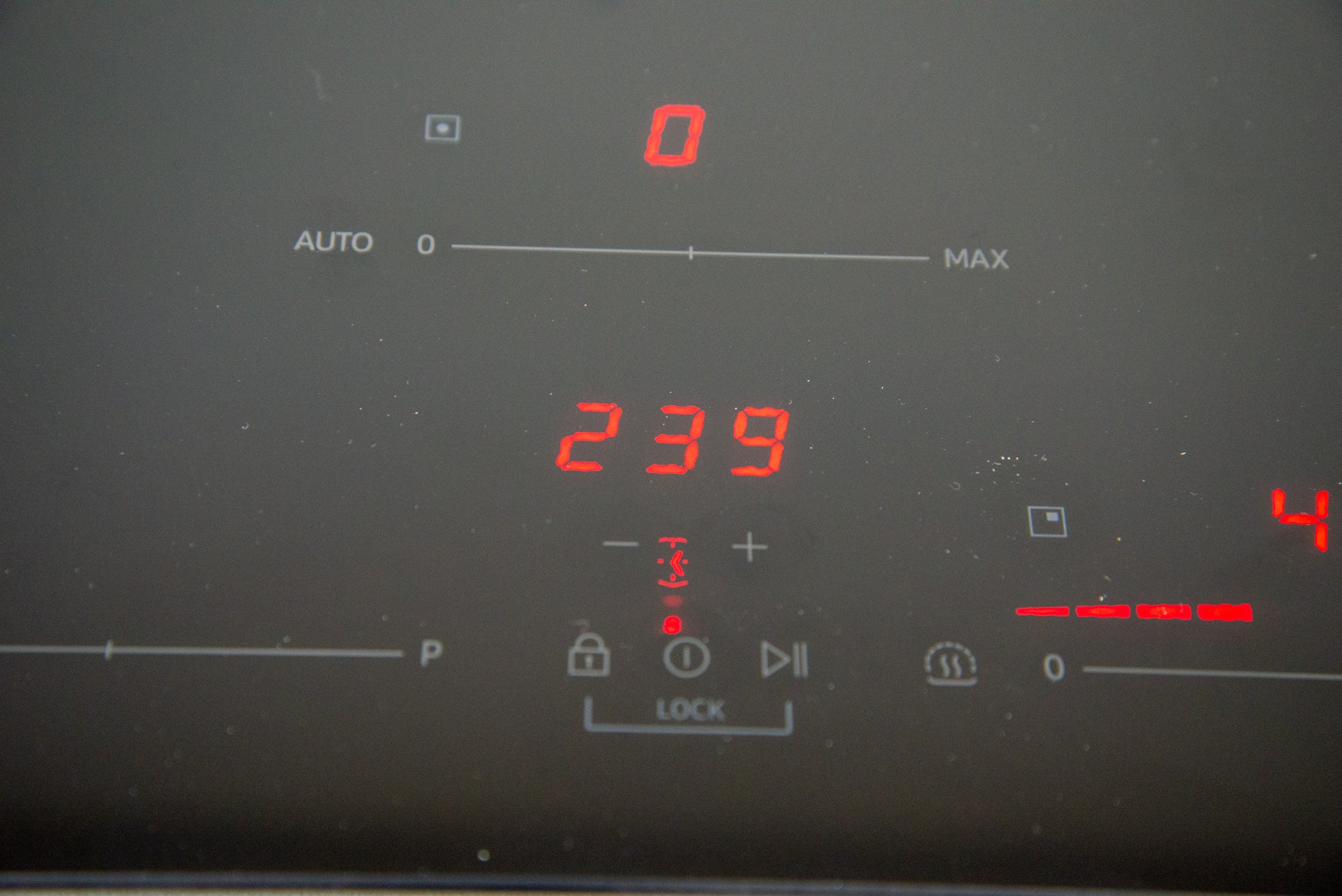
As well as giving manual control, the hob has a couple of automatic cooking modes, with each burner having Melt, Warm and Simmer options that use the built-in temperature monitor to look after the food.
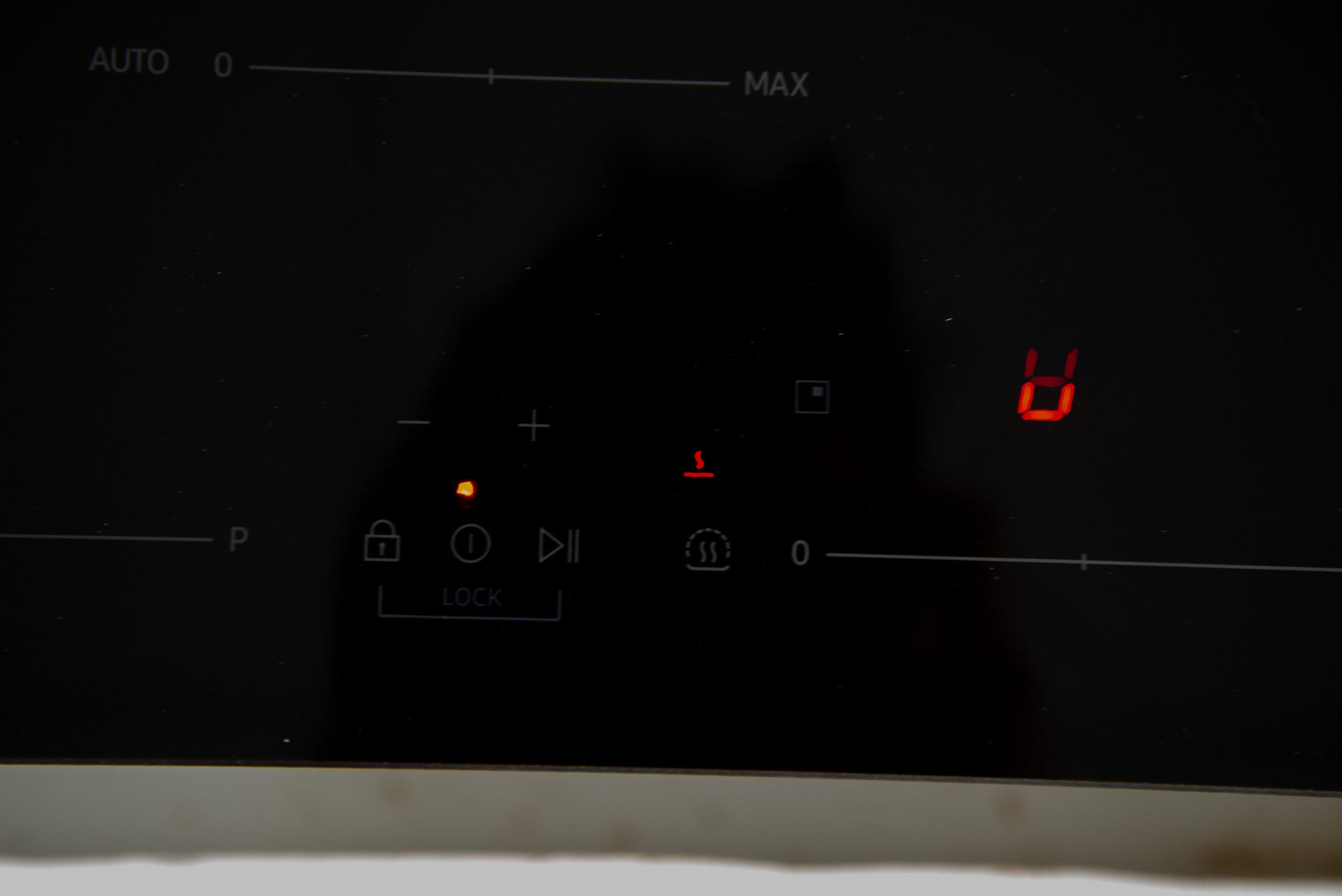
For convenience, there’s a pause button that temporarily stops cooking on all burners at the same time. While it’s easy to pause cooking, I had to refer to the manual on how to resume: you have to hit the play button and then swipe the highlighted power control. Again, the Samsung NZ84T9747VK/UR isn’t always that intuitive to use.
If the hob is accidentally turned off, the play/pause button can also recall previous hob settings and resume cooking.
Performance
- Water boils quickly
- Automated cooking makes life easier
I put the Samsung NZ84T9747VK/UR through my normal tests. I started with water heat-up speeds. Using my large pan with 1.5 litres of water, the hob managed to heat it from 20°C to 90°C in 2mins 48secs, which isn’t far behind the exceptionally fast Miele KM7201FR. Next, with my medium pan, water hit 90°C in just 1min 27secs, which is incredibly fast.
With my small pan, 0.5 litres of water came to 90°C in 1min 45secs, which is also fast. I have seen faster on the AEG IAE84851FB, although that has a smaller burner ideal for my smallest pan, while the four burners here are identical.
I then tried out some of the automated programmes, starting by melting 100g of butter. This proved to be a very slow process, with the hob clicking the power on and off while taking its time. In the end, I found it easier to manually increase the power a bit to get the melting process started before reverting to the automatic setting.
On this programme, the hob maintained the butter’s melted temperature without cooking it. That’s handy, as I could walk away and not worry about returning to a pan with burnt-on butter residue.
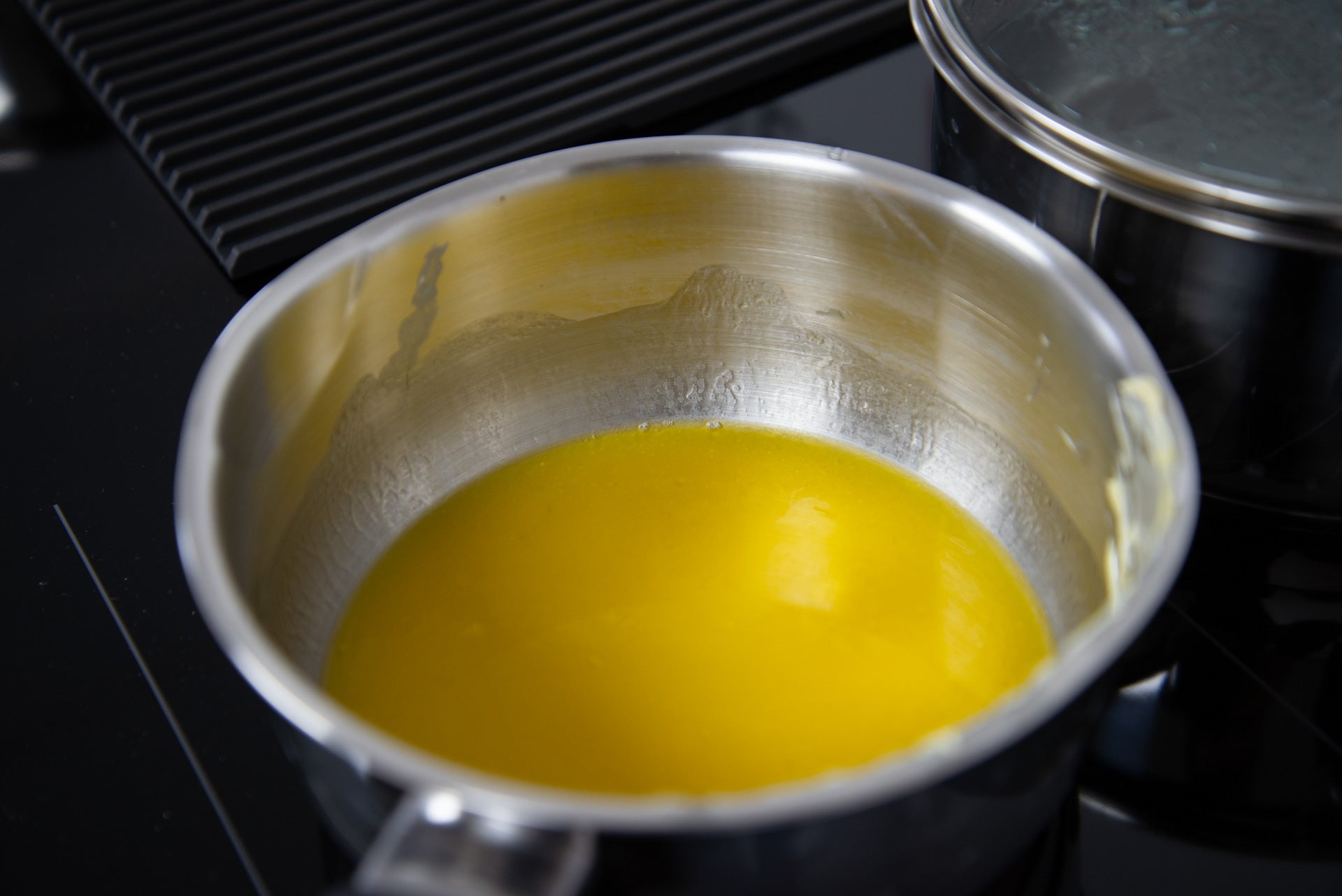
Putting the hob into Warm mode, I found that it kept my test liquid at 87°C, while the Simmer option had the thermometer hover at just over 100°C, reducing the liquid content at a reasonable rate.
I found the extractor fan very powerful. Holding my hand over it while the fan was on maximum, I could feel the suction pulling it down. When cooking, smoke from frying and steam from boiling were pulled out of the pans and into the ducting, making for a more pleasant cooking environment.
I used a thermal camera to see how the burner warms up a pan. Samsung has used traditional round burners here, which means that when a zone is linked, there can be a small gap between the two circular areas, requiring the food to be stirred and moved around for even cooking.
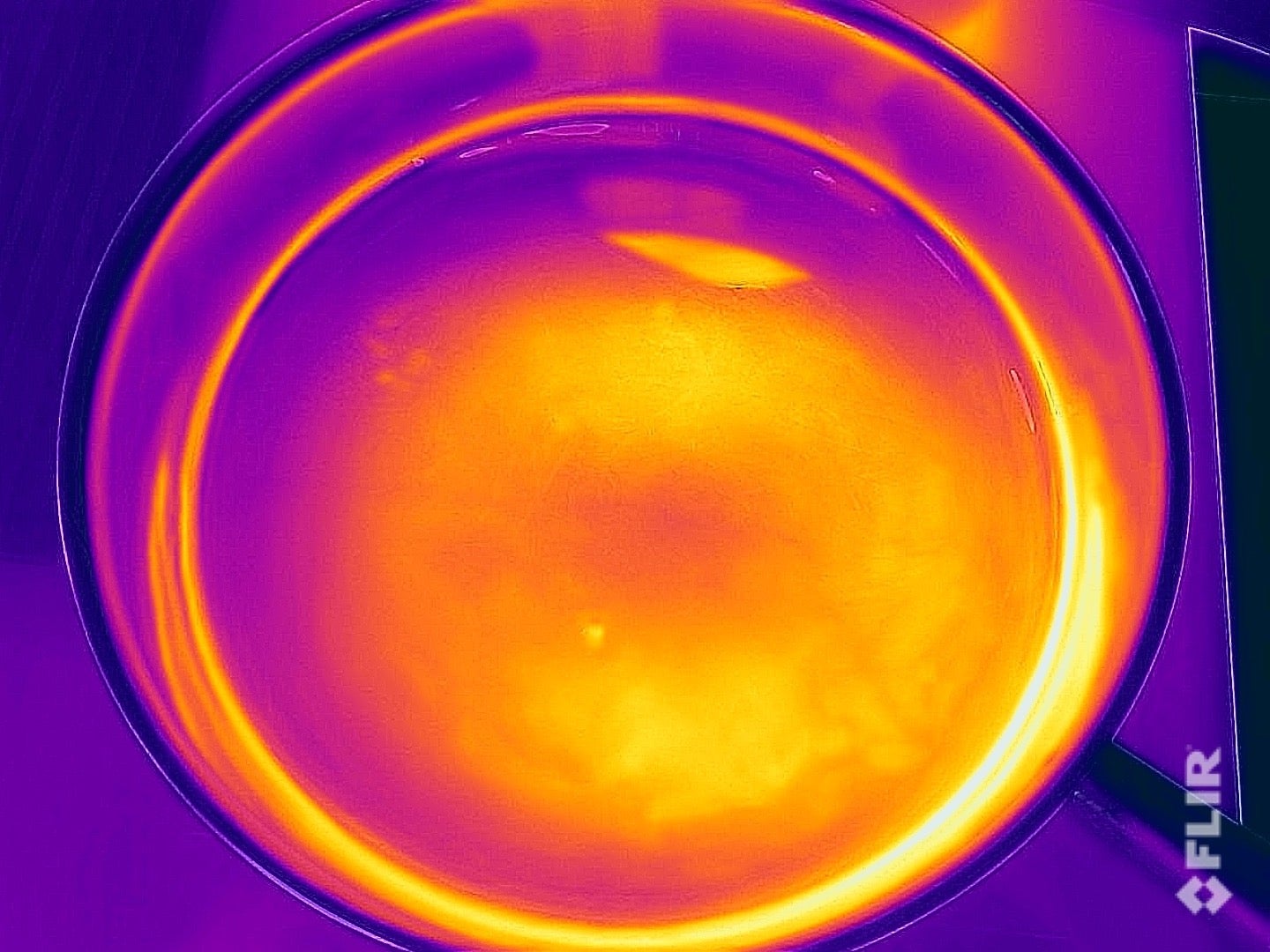
Latest deals
Should you buy it?
If you want a powerful induction hob and an extractor fan all-in-one, then this is a great choice.
If you want a hob with more space, then go for a larger model without a built-in extractor fan.
Final Thoughts
If you don’t want the bulk of a cooker hood in your kitchen, the Samsung Infinite Range CombiHob NZ84T9747VK/UR is a neat alternative. With powerful suction, this induction hob managed to remove smells, smoke and steam from my test kitchen.
It’s a decent induction hob in its own right, with fast boiling performance and useful automatic modes. The standard settings are easy to use, but the more complicated ones (such as pause and zone linking) aren’t so intuitive. I recommend keeping the manual handy while you get used to the hob.
Don’t have the space for something like this? Check out my guide to the best induction hobs.
How we test
Unlike other sites, we test every induction hob we review thoroughly over an extended period of time. We use standard tests to compare features properly. We’ll always tell you what we find. We never, ever, accept money to review a product.
Find out more about how we test in our ethics policy.
FAQs
The fan is built into the middle of the hob and is ducted downwards and out through an external wall.
As a 7.4kW hob, it needs a dedicated 32A circuit.
Trusted Reviews test data
Sustainability
TrustedReviews’ holds the fact that global warming is not a myth as a core value and will continuously endeavor to help protect our planet from harm in its business practices.
As part of this mission, whenever we review a product we send the company a series of questions to help us gauge and make transparent the impact the device has on the environment.
We currently haven’t received answers to the questions on this product, but will update this page the moment we do. You can see a detailed breakdown of the questions we ask and why in our sustainability info page.
Verdict
Combining a powerful induction hob and extractor fan into a wider-than-normal design, the Samsung Infinite Range CombiHob NZ84T9747VK/UR can give your kitchen the clean lines it deserves with the power you need. I found this model fast to heat water, and its automatic programmes are genuinely useful. Some of the controls could be a bit easier to use, though.
Pros
- Powerful extraction
- Fast heat-up times
- Useful automatic programmes
Cons
- Controls not always that intuitive
- Expensive
Introduction
Cooker hoods might be useful, but they’re often ugly and can ruin the look of a kitchen. The Infinite Range CombiHob NZ84T9747VK/UR solves that problem by integrating the extraction fan into the middle of the hob.
This makes for a larger-than-average hob, and you’ll need space below for the ducting, but if you hit the requirements, this is a powerful and flexible induction hob.
Design and features
- Integrated extractor fan
- Not always the most intuitive controls
- Automatic cooking programmes
At 830mm, the Samsung NZ84T9747VK/UR is wider than your average hob because there’s an extractor fan in the middle. That can save on having an overhead extraction fan, but it also means that despite the width, you don’t get any more physical cooking space. The AEG IAE84851FB, for example, has a bit more room for pans.
You also need to allow room for the extraction goods underneath, so you’ll lose some cupboard space. Extraction and recirculation options are available, so you don’t necessarily have to duct to the outside.

As with the burners, there are nine main power settings plus a boost for the extractor, although I found using it on the automatic mode was the best.
On top, there’s an aluminium grease filter, which is raised from the hob’s surface. That’s alright in terms of style, but if you want to move pans from one side of the hob to the other, they will have to be lifted. Without a completely flat surface, it also makes it harder to place larger items on the hob, such as big baking trays.

Inside, there’s a ceramic odour filter that removes smells as you cook (great when frying, I found) and a tray that collects any liquid spills.

The Samsung NZ84T9747VK/UR has four identical burners, each of which has a power slider, ranging from zero to nine and delivering up to 2.1kW per burner. There’s also a power boost mode that increases power to 3.7kW.

All four burners can be run at setting nine at the same time, but there’s a restriction on the power boost: one burner on the right and one on the left can be used in power boost mode at the same time, with the remaining two burners limited to setting five.
Nevertheless, that’s pretty flexible, as it means you can rapidly boil water on two burners, and still have enough power to keep other pans simmering away. Power boost is limited to 10mins, with burners dropping back to setting nine at the end of this period.
As well as running burners individually, you can combine the two on the left or two on the right into one larger zone, which is good for big pans or griddles. Doing this requires the two controls to be tapped at the same time. A dedicated linking button would have made life easier, but once I’d read the Samsung NZ84T9747VK/UR’s manual, I didn’t have to refer to it again.

Each burner has a timer, with the power automatically cut after the set period. Additionally, there’s a standalone timer not linked to any zone.

As well as giving manual control, the hob has a couple of automatic cooking modes, with each burner having Melt, Warm and Simmer options that use the built-in temperature monitor to look after the food.

For convenience, there’s a pause button that temporarily stops cooking on all burners at the same time. While it’s easy to pause cooking, I had to refer to the manual on how to resume: you have to hit the play button and then swipe the highlighted power control. Again, the Samsung NZ84T9747VK/UR isn’t always that intuitive to use.
If the hob is accidentally turned off, the play/pause button can also recall previous hob settings and resume cooking.
Performance
- Water boils quickly
- Automated cooking makes life easier
I put the Samsung NZ84T9747VK/UR through my normal tests. I started with water heat-up speeds. Using my large pan with 1.5 litres of water, the hob managed to heat it from 20°C to 90°C in 2mins 48secs, which isn’t far behind the exceptionally fast Miele KM7201FR. Next, with my medium pan, water hit 90°C in just 1min 27secs, which is incredibly fast.
With my small pan, 0.5 litres of water came to 90°C in 1min 45secs, which is also fast. I have seen faster on the AEG IAE84851FB, although that has a smaller burner ideal for my smallest pan, while the four burners here are identical.
I then tried out some of the automated programmes, starting by melting 100g of butter. This proved to be a very slow process, with the hob clicking the power on and off while taking its time. In the end, I found it easier to manually increase the power a bit to get the melting process started before reverting to the automatic setting.
On this programme, the hob maintained the butter’s melted temperature without cooking it. That’s handy, as I could walk away and not worry about returning to a pan with burnt-on butter residue.

Putting the hob into Warm mode, I found that it kept my test liquid at 87°C, while the Simmer option had the thermometer hover at just over 100°C, reducing the liquid content at a reasonable rate.
I found the extractor fan very powerful. Holding my hand over it while the fan was on maximum, I could feel the suction pulling it down. When cooking, smoke from frying and steam from boiling were pulled out of the pans and into the ducting, making for a more pleasant cooking environment.
I used a thermal camera to see how the burner warms up a pan. Samsung has used traditional round burners here, which means that when a zone is linked, there can be a small gap between the two circular areas, requiring the food to be stirred and moved around for even cooking.

Latest deals
Should you buy it?
If you want a powerful induction hob and an extractor fan all-in-one, then this is a great choice.
If you want a hob with more space, then go for a larger model without a built-in extractor fan.
Final Thoughts
If you don’t want the bulk of a cooker hood in your kitchen, the Samsung Infinite Range CombiHob NZ84T9747VK/UR is a neat alternative. With powerful suction, this induction hob managed to remove smells, smoke and steam from my test kitchen.
It’s a decent induction hob in its own right, with fast boiling performance and useful automatic modes. The standard settings are easy to use, but the more complicated ones (such as pause and zone linking) aren’t so intuitive. I recommend keeping the manual handy while you get used to the hob.
Don’t have the space for something like this? Check out my guide to the best induction hobs.
How we test
Unlike other sites, we test every induction hob we review thoroughly over an extended period of time. We use standard tests to compare features properly. We’ll always tell you what we find. We never, ever, accept money to review a product.
Find out more about how we test in our ethics policy.
FAQs
The fan is built into the middle of the hob and is ducted downwards and out through an external wall.
As a 7.4kW hob, it needs a dedicated 32A circuit.
Trusted Reviews test data
Sustainability
TrustedReviews’ holds the fact that global warming is not a myth as a core value and will continuously endeavor to help protect our planet from harm in its business practices.
As part of this mission, whenever we review a product we send the company a series of questions to help us gauge and make transparent the impact the device has on the environment.
We currently haven’t received answers to the questions on this product, but will update this page the moment we do. You can see a detailed breakdown of the questions we ask and why in our sustainability info page.
























